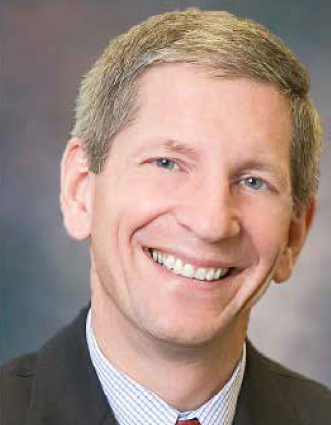
Prof. Gary Was
Structural Material Degradation
BIOGRAPHY
Professor Was received his ScD from MIT in 1980, after which he joined the Nuclear Engineering Department at the University of Michigan as an Assistant Professor. He became Full Professor in 1990 and was endowed with the Walter J. Weber, Jr. Professor of Sustainable Energy, Environmental and Earth Systems Engineering chair in 2007. He holds appointments in Nuclear Engineering and Radiological Sciences, and Materials Science and Engineering at the University of Michigan and has served as Director of the Michigan Memorial Phoenix Energy Institute, Associate Dean of the College of Engineering and Chair of the Nuclear Engineering and Radiological Sciences Department twice. Professor Was’ research is focused on materials for advanced nuclear energy systems and radiation materials science, including environmental effects on materials, radiation effects, ion beam surface modification of materials and nuclear fuels. Most recently his group has led the development of ion irradiation as a surrogate for neutron irradiation in reactor structural materials, and he has utilised that capability to uncover the mechanism of irradiation assisted stress corrosion cracking of reactor core structural materials.
Professor Was received the Presidential Young Investigator award from NSF in 1985 and in 1994 he received the Excellence in Research Award from the College of Engineering. He was awarded the Champion H. Matthews Award from TMS, the Outstanding Achievement Award and Special Achievement Award by the Materials Science and Technology Division of the American Nuclear Society, the 2008 Henry Marion Howe Medal from ASM, the Lee Hsun Award from the Chinese Academy of Sciences, the Mishima Award from ANS and the Glenn Murphy Award from ASEE. He is a Fellow of The Minerals, Materials and Metals Society (TMS), the Materials Research Society, ASM International, NACE International and the American Nuclear Society. Professor Was has published over 270 technical articles in referred, archival journals, presented over 400 conference papers, and delivered over 200 invited talks and seminars, published a graduate level textbook on Radiation Materials Science in 2007 and a second edition in 2016. He serves as Editor-in-Chief of the Journal of Nuclear Materials.
HOW DID I GET STARTED IN MY CAREER?
I have had an interest in nuclear energy as far back as I can remember. I recall building a plastic model of the nuclear powered cargo/transport liner Savannah. I ended up in Engineering at the University of Michigan because I wanted to enter ROTC and it was only available to engineering students at the time. Since I was in Engineering, I needed to select a major and after hearing the boring presentations of mechanical, electrical (pre-computer days), civil, etc., up came the presentation on nuclear. I recalled my interest and selected it because it sounded “novel”. As a senior, I realised that my heart wasn’t in running neutronics codes and materials sounded exciting. So I started my career in nuclear materials in graduate school at MIT working with Arden Bement.
CAREER HISTORY
Unfortunately, 10 months after I arrived at MIT, Prof. Bement announced that he was heading to DARPA. So I joined a project with Ron Latanision on SCC of alloy 600 steam generator tubing, which gave me my start in the world of stress corrosion cracking. After coming to Michigan, I began to set up an ion beam laboratory to study surface modification by ion beams. Soon after, I realised that protons could be used to induce radiation damage. Then began a long-term effort at exploring the use of ion irradiation to simulate the damage created by neutron in core structural materials. I began to apply this to the irradiation assisted stress corrosion cracking problem which led to a long-term effort at solving the mechanism of this mode of degradation. At the same time, I used the opportunity to question whether heavy (self-) ions could be used to reach high damage levels typical of LWR end-of-life or fast reactors. This became my second major pursuit – the determination of ion irradiation conditions required to emulate the neutron-irradiated microstructure of structural materials in reactor cores to high doses.
HOW DID I GET INTRODUCED TO A.N.T. INTERNATIONAL?
I have known Ron Adamson since my very first Ph.D. student, as he was working on iodine-SCC of Zircaloy using the segmented mandrel technique. Ron helped him with experiments at Vallecitos. We reconnected in a meeting in China recently and began talking about his work with A.N.T. He suggested that I should come to a ZIRAT meeting. At Peter Rudling’s invitation, I gave a lecture at the Clearwater meeting in 2017 and then again in 2018 and 2019. I am delighted to have an opportunity to make a contribution to the field and to A.N.T.
WHAT DO I DO FOR FUN?
Faculty have no time for fun. But when I do manage to slip away for some exercise, I play hockey. I have played since the age of 8, through college, and continue to do so 1-2 days per week and it is the best exercise one can get. At this point it doesn’t much resemble the game I played when I was young, but now I can play with my sons. For something more relaxing, I enjoy gardening and playing with my new grandson.

